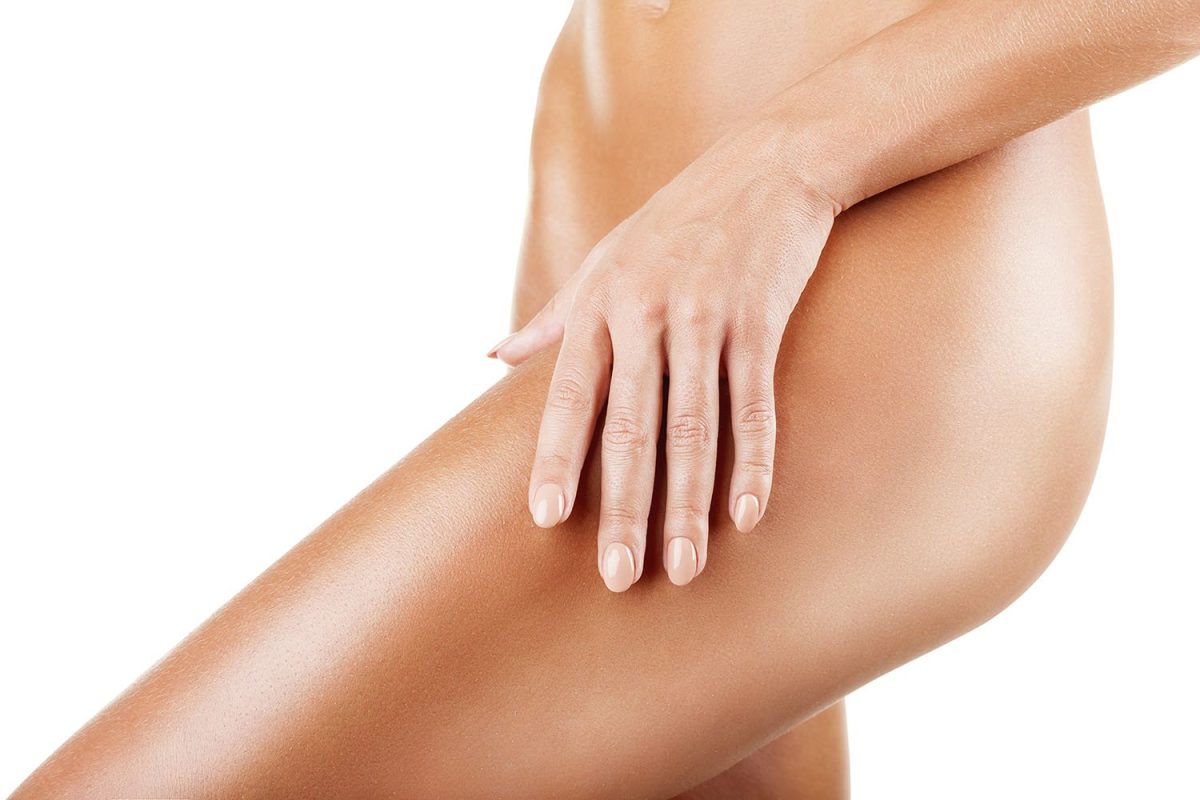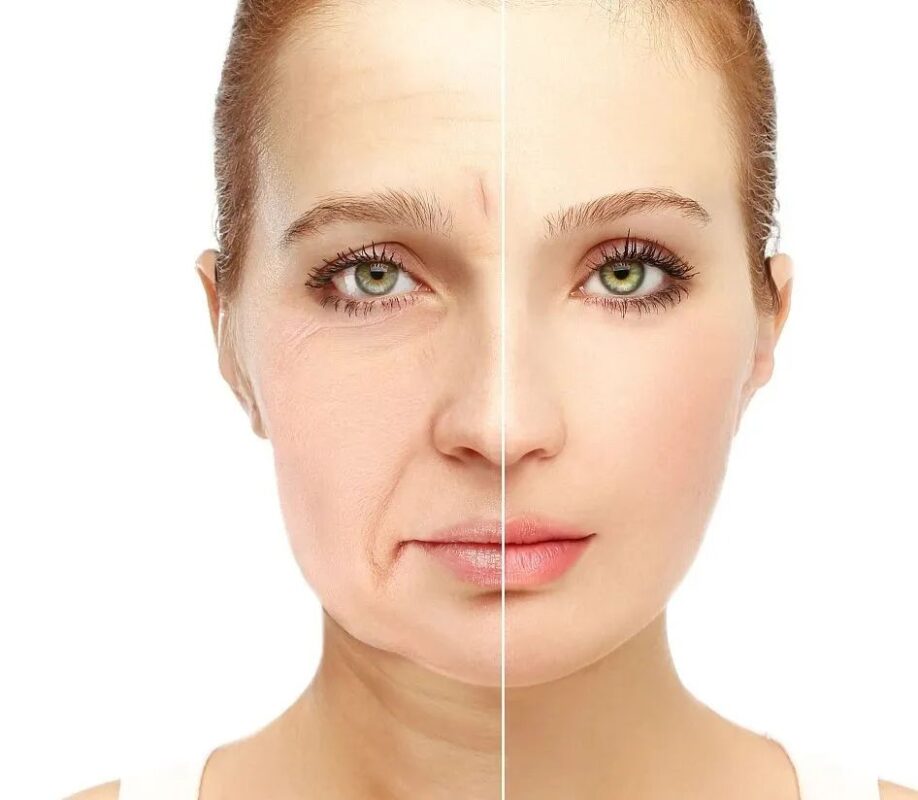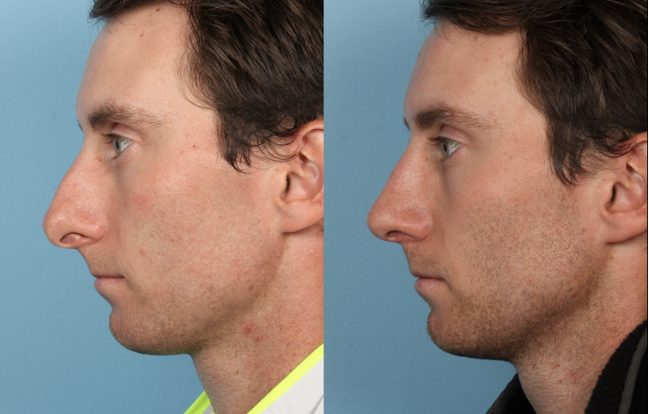Ultherapy Science Unveiled
Ultrasound Technology
Ultherapy harnesses micro-focused ultrasound technology. This allows the applicator to precisely target specific layers of the skin, muscle, and fat without invasive treatment. It does this without cutting or disrupting the surface.
The applicator device emits energy that reaches deep into the dermis, targeting fat and muscle without invasive treatment. Here, it starts the healing process. It’s a non-invasive treatment, making it popular among those avoiding surgery and others with fat reduction goals.
Collagen Stimulation
The key to Ultherapy’s effectiveness lies in its ability to stimulate collagen production. As we age, collagen levels drop in people, leading to wrinkles and sagging skin.
Ultherapy kickstarts the body’s natural repair process. It does so by heating small targets beneath the skin. This heat encourages new collagen to form over time.
Patients often see improvements within months as their skin becomes firmer and more youthful.
Precision Targeting
One of Ultherapy’s biggest advantages is its precision. The device can reach various depths of the skin. This ensures optimal results for different concerns.
Technicians can adjust the machine to target just below the surface for fine lines or deeper for more pronounced sagging. Each treatment is tailored to the individual’s needs, offering personalized outcomes.
What is Ultherapy Treatment
FDA Approval
Ultherapy stands as a non-surgical solution for those seeking skin rejuvenation. It has gained FDA approval, ensuring its safety and efficacy. This treatment targets the foundational layer of the skin, promoting collagen production without the need for cuts or disruptions to the skin’s surface.
It offers a promising alternative to traditional surgical methods, providing peace of mind to individuals concerned about safety.
Target Areas
The versatility of Ultherapy allows it to address various areas prone to aging signs. Primarily, it focuses on the face, neck, and chest – regions where skin laxity becomes more apparent over time. By stimulating deep layers of skin tissue, Ultherapy encourages natural healing processes that result in a lifted and more youthful appearance.
This adaptability makes it an attractive option for many looking to combat the signs of aging without resorting to invasive procedures.
Session Insights
An Ultherapy session typically spans between 30 to 90 minutes, depending on the area being treated. Patients often describe the experience as comfortable with minimal discomfort. During the procedure, ultrasound energy is directed beneath the skin surface, targeting tissues at optimal depths for collagen renewal.
While some may notice immediate improvements, optimal results usually manifest within two to three months as new collagen develops. This gradual enhancement contributes to a natural-looking lift and tightening of the skin.
Boosting Collagen with Ultherapy
Natural Process
Ultherapy harnesses ultrasound energy to kick-start the body’s collagen production. This non-invasive method targets skin layers deep below the surface without harming the outer layer.
It stimulates the natural healing process, encouraging the production of new collagen. Collagen is crucial for maintaining skin’s elasticity and firmness. By boosting its levels, Ultherapy helps reverse signs of aging.
Collagen Importance
Collagen acts as the skin’s scaffolding, providing structure and support. As we age, collagen production declines, leading to wrinkles and sagging skin.
Ultherapy effectively counters this by stimulating the body to create more collagen. This restores skin’s youthful appearance from within.
Results Timeline
Patients often wonder when they’ll see the effects of their Ultherapy treatment. Initial improvements can be noticeable within a few weeks as new collagen forms.
However, optimal results typically emerge after 2-3 months. The skin continues to improve for up to six months post-treatment as collagen regeneration progresses.
Key Benefits of Ultherapy
Non-Invasive Nature
Ultherapy stands out due to its non-invasive approach. Unlike surgical facelifts, it uses focused ultrasound to lift and tighten skin. This means no cuts or incisions are necessary.
Patients appreciate the safety and comfort of this method. They face fewer risks compared to traditional surgery. The use of ultrasound is a significant advantage, making the procedure smoother for everyone involved.
Zero Downtime
One of Ultherapy’s biggest draws is the zero downtime required post-treatment. Patients can go back to their daily routines immediately after their session. This convenience is unmatched by many other cosmetic procedures.
They don’t have to worry about taking time off work or pausing their social life. This benefit makes Ultherapy an attractive option for busy individuals seeking aesthetic improvements without the hassle.
Long-Lasting Results
Ultherapy offers results that are both noticeable and long-lasting. Its effects can be seen over time as collagen production increases, leading to tighter, more youthful-looking skin.
The longevity of these results surpasses many other non-invasive treatments available today. Patients enjoy the benefits for months, even years, after just one treatment. This enduring effect provides great value and satisfaction among those who choose Ultherapy for their skin tightening needs.
Skin Tightening and Wrinkle Reduction
Ultherapy Mechanics
Ultherapy targets loose skin with precision. It uses ultrasound energy to heat tissue layers beneath the skin. This heat reaches the muscle and fat layers, causing them to tighten.
The applicator focuses on areas like the lower face, neck, and chin. Patients often feel a warming sensation during treatment. Some experience mild discomfort or swelling, but it typically subsides within a day.
Collagen Boost
One key to Ultherapy’s success is its stimulation of collagen production. Collagen keeps our skin firm and smooth. As we age, production decreases, leading to wrinkles and sagging.
After Ultherapy, collagen levels increase over time. This results in reduced fine lines and firmer skin. The full effects become visible in two to three months as collagen rebuilds.
Visible Improvements
Patients report significant improvements post-treatment. Their skin feels tighter and looks more lifted, especially around the brow and jawline.
Fine lines around the mouth and eyes soften. The overall texture of their skin enhances, giving a youthful radiance. These changes can last up to a year or more with proper care.
Understanding Potential Risks
Common Effects
Temporary redness, swelling, and tenderness are common after ultherapy. These side effects usually fade within a few hours to days. They indicate the body’s natural healing process is at work.
Patients often experience minimal downtime, making it a convenient option for those leading busy lives. The sensation during the procedure varies, with some describing it as mild discomfort.
Rare Risks
On rare occasions, individuals may encounter temporary nerve damage or bruising. Such instances are uncommon but underscore the need for a skilled practitioner.
Choosing someone experienced and qualified can significantly reduce these risks. It ensures the procedure is both safe and effective.
Practitioner Choice
The importance of selecting a qualified practitioner cannot be overstated. They possess the necessary knowledge to minimize risks and ensure optimal results.
Their expertise also plays a crucial role in determining if an individual is a good candidate for ultherapy. Not everyone’s skin responds the same way, making an initial consultation vital.
Recovery Process Explained
No Downtime
Unlike many cosmetic procedures, Ultherapy stands out for its minimal recovery time. Patients can resume their daily activities immediately after the session. This convenience is a significant advantage, making it an attractive option for those with busy schedules.
They can return to work or any other routine tasks without delay. This aspect significantly reduces the stress associated with more invasive treatments that require days or weeks of recovery.
Aftercare Tips
Post-treatment care is straightforward but crucial for optimal results. It’s important to avoid direct sunlight and apply sunscreen diligently. The skin might be more susceptible to UV damage immediately following the procedure.
Using recommended skincare products can also enhance the treatment’s effectiveness. These products are usually aimed at soothing the skin and promoting collagen production.
Visible Results
Patients should manage their expectations regarding when they will see improvements. Visible changes in skin tightening and wrinkle reduction typically appear within two to three months after treatment.
The gradual improvement is due to the natural process of collagen regeneration in the skin. Some patients may notice initial effects sooner, but significant results unfold over time, peaking around six months post-treatment.
Real Reviews and Results
Patient Feedback
Patients often share their Ultherapy experiences with enthusiasm. Many notice a visible difference within days. They report feeling more confident as their skin appears tighter and more youthful.
One patient described her satisfaction, saying the results exceeded her expectations. She noticed her jawline seemed firmer just two weeks after the treatment. Another mentioned that the procedure was quick, taking only about 90 minutes in the office. This convenience made it an attractive option for busy individuals.

Visual Evidence
Before-and-after photos play a crucial role in illustrating Ultherapy’s impact. These images often show significant improvement in skin tightness and contouring. For many, seeing these changes is believing in the treatment’s potential.
Photos typically highlight areas like the neck, chin, and eyebrows. Here, improvements are most noticeable. Patients and doctors alike use these images to discuss goals and realistic outcomes.
Satisfaction Rates
Overall, patient satisfaction with Ultherapy is high. This reflects not only its efficacy but also its safety profile. Side effects are minimal, making it a preferred choice for those wary of more invasive options.
Studies indicate that over 80% of patients see a positive difference post-treatment. This statistic underscores Ultherapy’s standing as a reliable and effective method for skin tightening.
Closing Thoughts
Ultherapy emerges as a beacon of hope for those seeking non-surgical solutions for skin rejuvenation. Through the sections, we’ve navigated the science behind Ultherapy, its process, and the tangible benefits it offers, such as collagen boost and wrinkle reduction. Equally, we’ve touched on the risks and recovery, grounding our discussion in real reviews to paint a comprehensive picture. This treatment stands out not just for its effectiveness but for its ability to deliver results with minimal downtime, offering a blend of convenience and efficacy that’s hard to overlook.
Your journey towards a more youthful appearance doesn’t have to be daunting. Armed with knowledge and insights from those who’ve walked this path before, you’re better positioned to make an informed decision. If Ultherapy sounds like your next step towards achieving your aesthetic goals, why wait? Reach out to a certified practitioner today and take that leap towards embracing a radiant, more confident you.
Frequently Asked Questions
What is Ultherapy?
Ultherapy is a non-invasive cosmetic procedure designed to lift and tighten skin on the face, neck, and chest by using ultrasound technology to stimulate collagen production.
How does Ultherapy work?
Ultherapy works by delivering focused ultrasound energy to the skin’s foundational layer, triggering the body’s natural response to generate fresh, new collagen without cutting or disrupting the skin’s surface.
What are the key benefits of Ultherapy?
Key benefits include noticeable lifting and tightening of sagging skin, reduction in the appearance of wrinkles, and improved skin texture with minimal downtime.
Can Ultherapy replace a facelift?
While Ultherapy can provide significant lifting effects, it does not replicate the results of a surgical facelift. It is best suited for those looking for mild to moderate improvements without surgery.
What are the potential risks of Ultherapy?
Potential risks include temporary redness, swelling, tenderness, and rare instances of bruising or numbness along treated areas. These side effects typically resolve within a few days.
What is the recovery process like after Ultherapy?
Recovery from Ultherapy is minimal, allowing most individuals to return to their normal activities immediately after treatment. Any mild swelling or redness usually subsides within a few hours to days.
Are results from Ultherapy immediate?
Initial results may be visible immediately after treatment, but full results typically emerge over 2-3 months as new collagen develops and lifts the skin.





















